
The extension of the annex of the Constitutional Court is a game changer that has blown into the solemn and closed space of the main building. In fact, the expanded spaces did not proceed as planned. The existing plan, which had a comprehensive and clear structure, was difficult to apply to the actual site conditions. Therefore, the architects decided to add a new space by enhancing functional convenience while emphasizing the connection with the existing extension.
The north side encloses the front terraced fountain yard together with the main building, and provides a view extending to Bukhansan Mountain in the distance through the window of the reading room of the library. The first floor is not only linked to the lower floor through the open space connecting the main entrance hall of the library and the book cafe, but also faces the south and west rear gardens, sunken yard, and the hanok residential area in Bukchon. The view of the entire Bukchon area can be enjoyed from the roof-top garden, which is another rest area. The shape of the annex is based on a rectangle, but the east side has a diagonal contour corresponding to the front width. Each corner of the square is opened with a window and the depth of the elevation frame is changed to express the elegant nobility of the delicate hanok eaves. While applying the vertical colonnade pattern of the main building, which maintains strict symmetry with the stepped fountain in the front, the main building will harmonize with the layout and composition with some changes.
The library, which has been built as an individual area, minimizes the volume of the upper to alleviate the pressure felt on the main building without covering the main building. The contact points with the outside were expanded and openness was strengthened. The planar configuration attempts to establish a relationship with the different surrounding environments by opening the four sides with a central core. First, the east side directly faces pedestrians and visitors going to and from Bukchon. On the first basement floor, the exhibition room and civil complaint reception room are placed around the lobby, and inside, it forms a boundary with the area connected with the main building, and contains the staff office and a multi-purpose room. In the exhibition room, communication such as the history of the Constitution and the role of the Constitutional Court is communicated through exhibits. On the first and second floors, where the library is located, the reading space and bookshelves are arranged in an open style toward the outside.
During the design process, the remains of the annex of the Neungseong Guard Palace were discovered on the site, and an experiential exhibition space was added to the site where the extension was being built, providing an idea of the missing superstructure of the Neungseong Guard Palace. The exhibition hall was designed by dividing the base and the superstructure. The base, which was made by connecting the excavated base stones, was constructed so that visitors could walk on it, and the upper part was built into the original space with a single mass so that the inside and outside could be viewed at once. . This was done to bring the historical space closer to the experience. The form of the superstructure was presented as abstractly as possible, allowing room for the viewer to imagine. Structurally, the existing pillars and small wood sticks preserve and maintain the original shape, and form new pillars at the missing foundation pier locations to support the superstructure. On the inner wall, grooves were placed at certain positions so that the “interval(gan)” of a hanok could be guessed. The side end and the main floored room (Daecheong) side were opened to enable observation of the remains by visitors. The material used was zinc plate, which was chosen because it is closest to the color of the tiles in Bukchon. As part of a space that is making a new history while embracing the historical traces of Bukchon, it is hoped that through another transformation, the Constitutional Court will become a place where the unique value of sharing and communication can be felt.
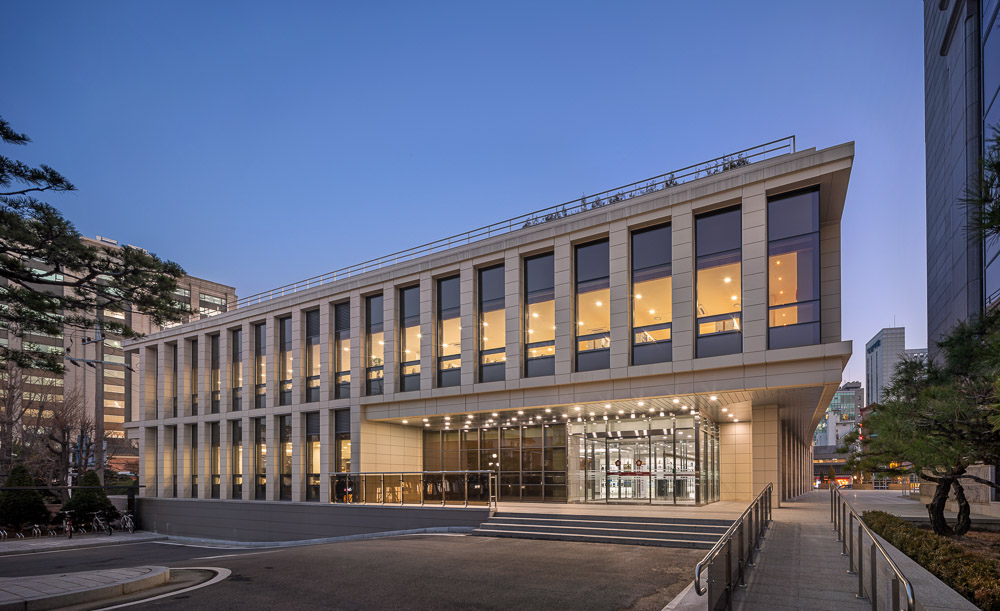
존중과 변화가 돋보이는 명쾌한 공간 해석, 헌법재판소 별관 증축
헌법재판소 별관 증축은 본관의 엄숙하고 폐쇄적인 공간에 불어온 변화의 바람이다. 사실 증축된 공간은 현상설계안 그대로 진행되지 않았다. 간결하고 명쾌한 구성을 가지고 있던 기존 계획안은 실제 부지 현황에 적용하기 어려웠고, 기존 공간과 연결되면서 기능적 편의를 더한 새롭고 간결한 공간을 추가하기로 했다.
북측은 본관과 함께 전면의 계단식 분수 마당을 감싸며, 도서관 열람실 창을 통해 멀리 북한산까지 이어지는 조망을 품는다. 1층은 도서관의 주 출입 홀과 북카페를 잇는 개방공간을 통해 아래층과 연계될 뿐 아니라, 남측과 서측의 후정과 선큰마당, 북촌의 한옥 주거지와 대면한다. 또 다른 휴게공간인 옥상 정원에서는 북촌 일대의 Roof-Top 조망을 누릴 수 있다. 별관의 평면 형태는 직사각형을 바탕으로 하지만, 동측은 전면 가로에 대응한 사선형태이다. 사각형의 각 모서리를 창으로 열어놓고, 입면 프레임 깊이에 변화를 주어 섬세한 한옥 처마 선의 우아한 품격을 표현했다. 본관 청사의 수직 열주 패턴을 적용하면서도 전면의 계단식 분수와 함께 엄격한 대칭을 유지하고 있는 본관에 작은 변화를 가미한 배치와 구성으로 조화를 이룬다.
본관을 가리지 않으면서 본관의 중압감을 완화할 수 있도록 가로변 쪽 지상 볼륨을 최소화했다. 외부와의 접촉을 확대하고 개방성을 강화하게 되었다. 평면구성은 중앙 코어를 두고 4면을 개방하는 형태로 각기 다른 주변 환경과 관계 맺기를 시도했다. 먼저 동측은 북촌을 오가는 보행자와 방문객을 직접 대면한다. 지하 1층은 로비를 중심으로 전시실과 민원 접수실이 배치되고, 그 안쪽으로 직원 업무공간과 다목적실 등 본관과 연계한 영역과 경계를 이룬다. 전시실에서는 헌법의 역사와 헌법재판소의 역할 등 전시물을 통한 소통이 이루어지고, 도서실이 위치한 1층과 2층은 열람공간과 서가 등이 외부를 향해 열린 형태로 배치되었다.
설계를 진행하던 중 부지 내에서 능성위궁 별채 유구(주초 몇 개, 적심들, 기단석 일부)가 발견되면서 증축되는 곳에 능성위궁의 사라진 상부구조를 가늠케 하는 체험형 전시 공간이 추가로 들어섰다. 전시관은 기단과 상부구조를 구분하여 설계했는데, 출토된 기단석을 이어서 만든 기단부는 관람자가 디디며 걸을 수 있도록 했고, 상부는 단일 매스로 원래 있던 공간의 형태로 만들며 내외부를 한 번에 살펴볼 수 있게 만들었다. 이는 역사적 공간을 경험에 가깝게 하는 것이었다. 상부구조의 형태는 최대한 추상적으로 제시하여 관람자로 하여금 상상할 여지를 남겨두었으며. 구조적으로는 기존 주초와 적심들은 원형을 보존, 유지시키고 사라진 주초 위치에 새로운 주초를 형성해서 그것들로 상부구조를 지지하게 했다. 내벽에는 일정 위치에 홈을 두어 한옥의 ‘간’을 짐작할 수 있게 했다. 관람자의 시선에서 유구의 관찰이 용이하도록 측단부와 대청 쪽을 개방했다. 재료는 징크판을 사용했는데 이는 북촌의 기와색에 가장 가깝다는 이유로 선택되었다. 북촌이 가졌던 역사적 흔적들을 고스란히 품고서 새로운 역사를 만들어가고 있는 공간 일부분으로서, 또 한 번의 변신을 통해 헌법재판소가 남다른 공유와 소통의 가치를 느끼는 곳이 되기를 기대해본다.

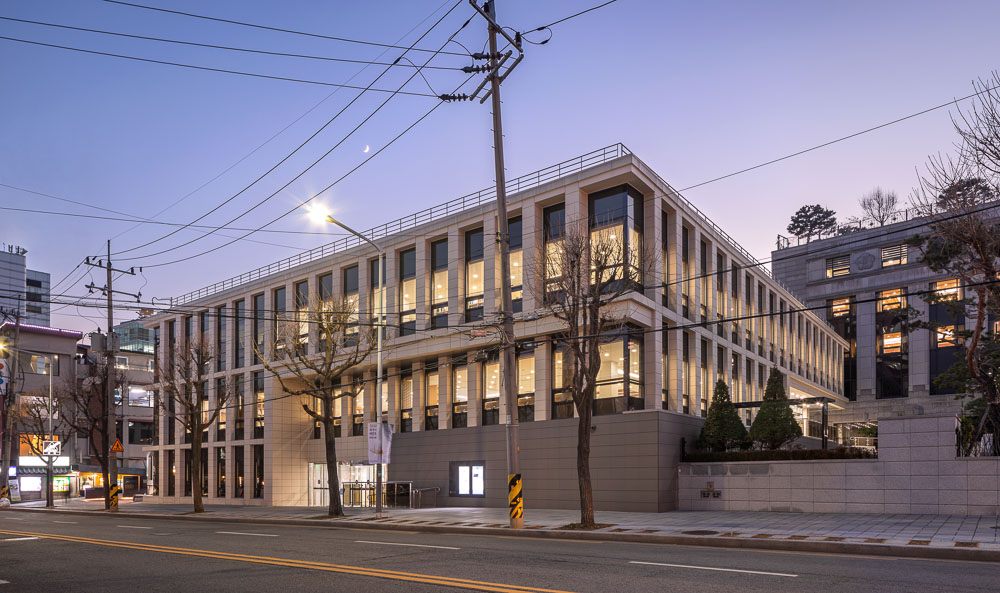



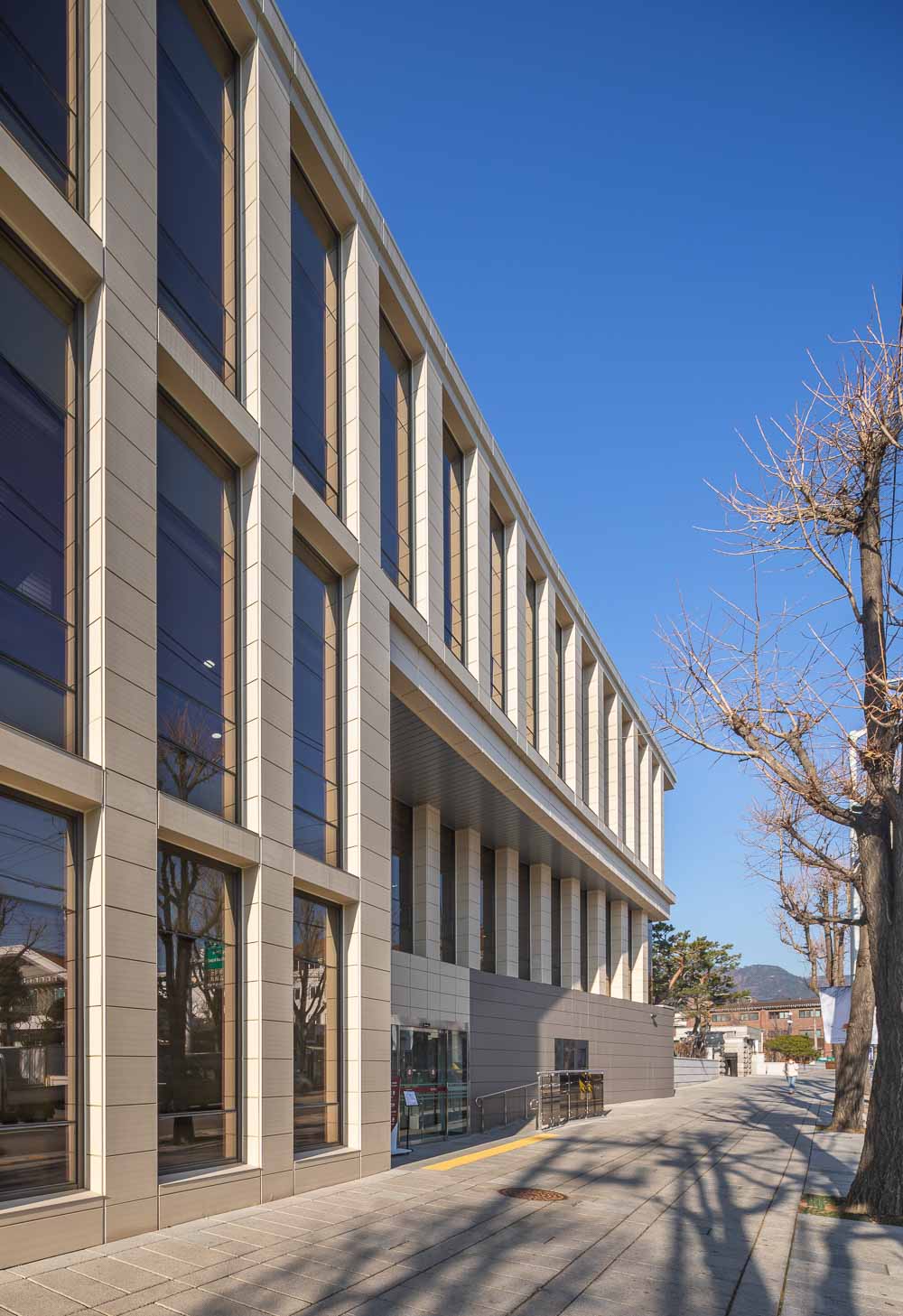

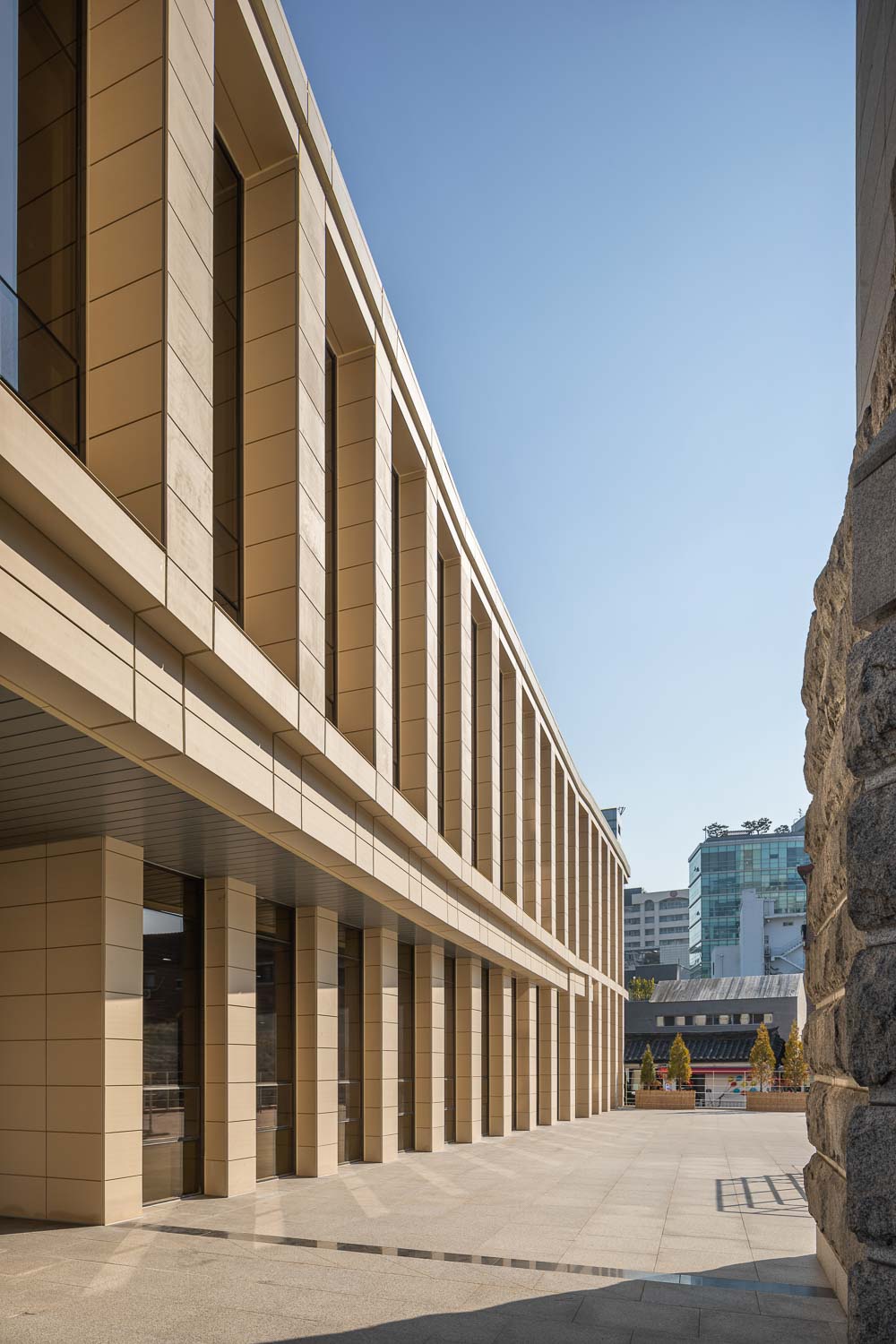



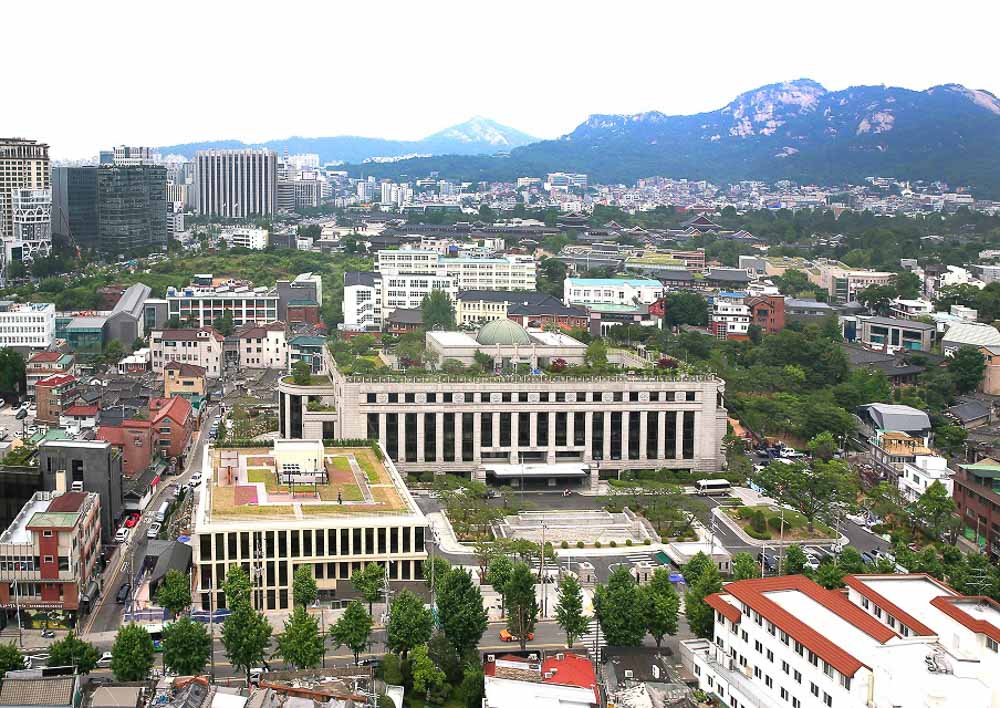
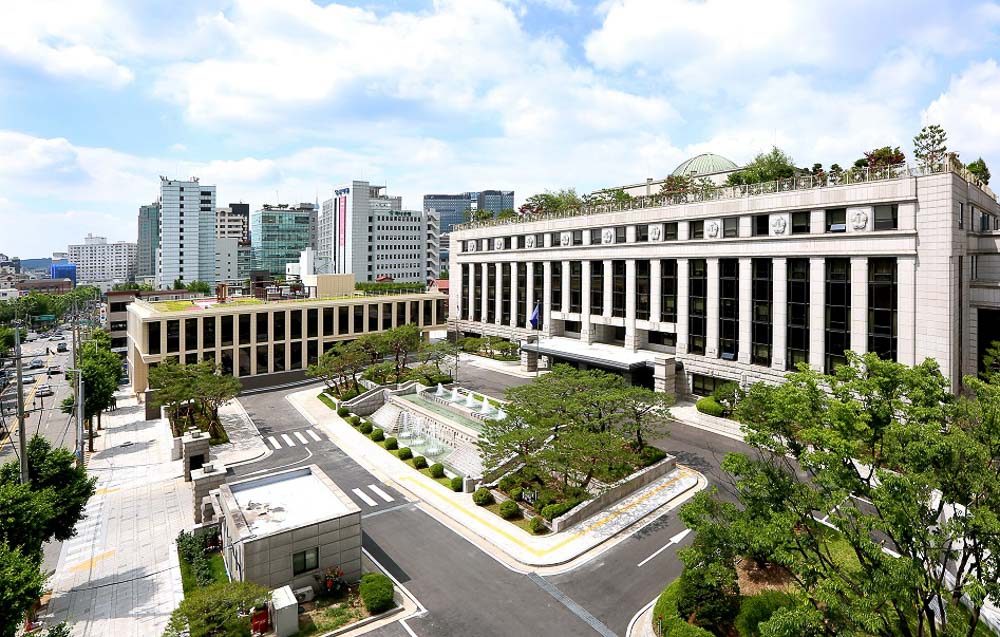
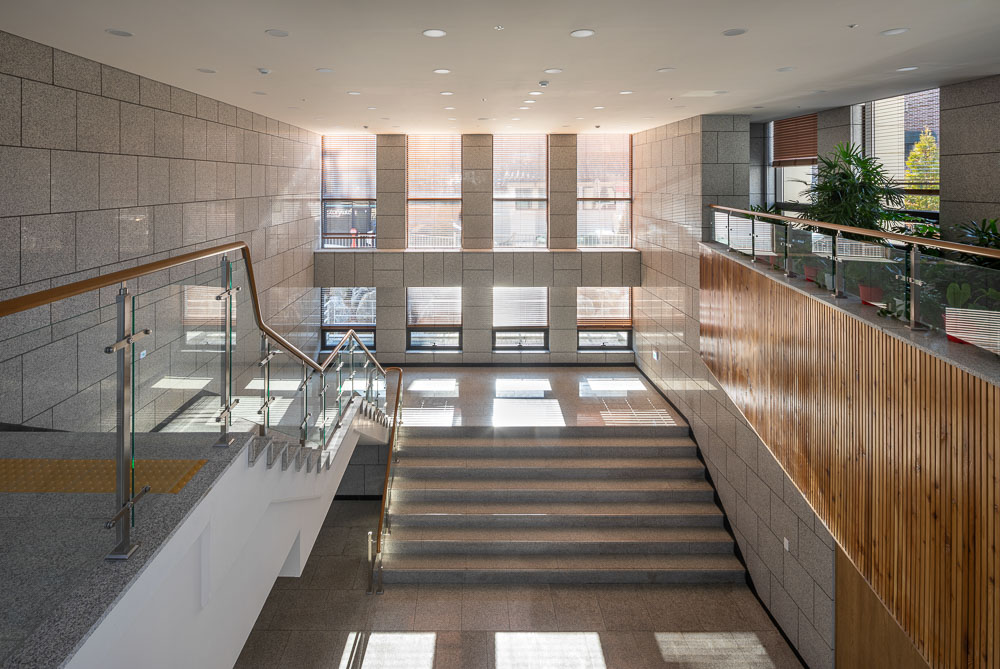

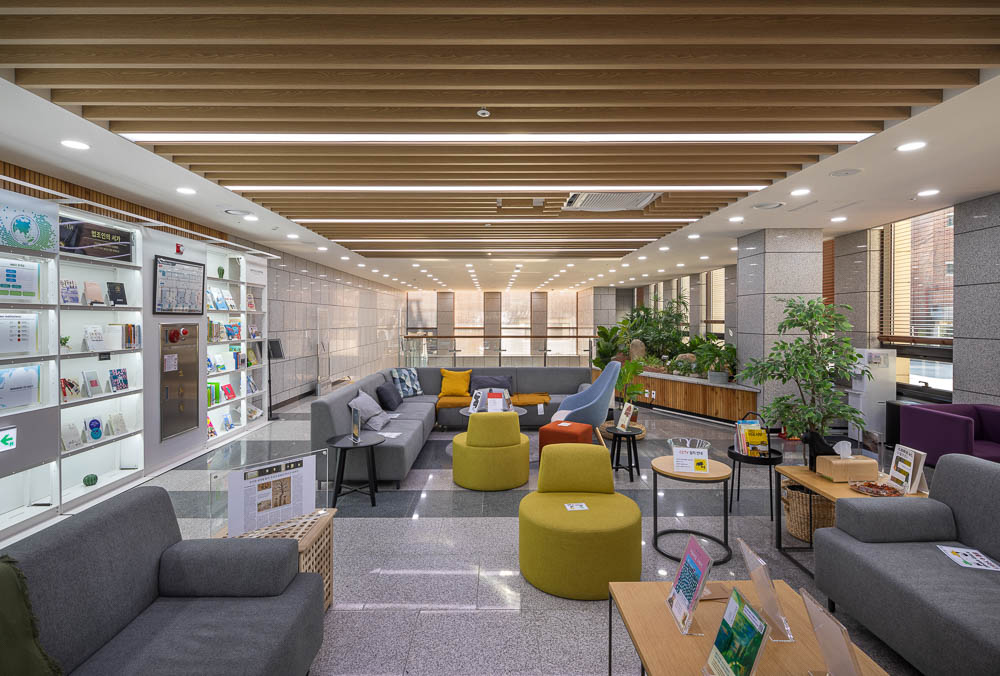

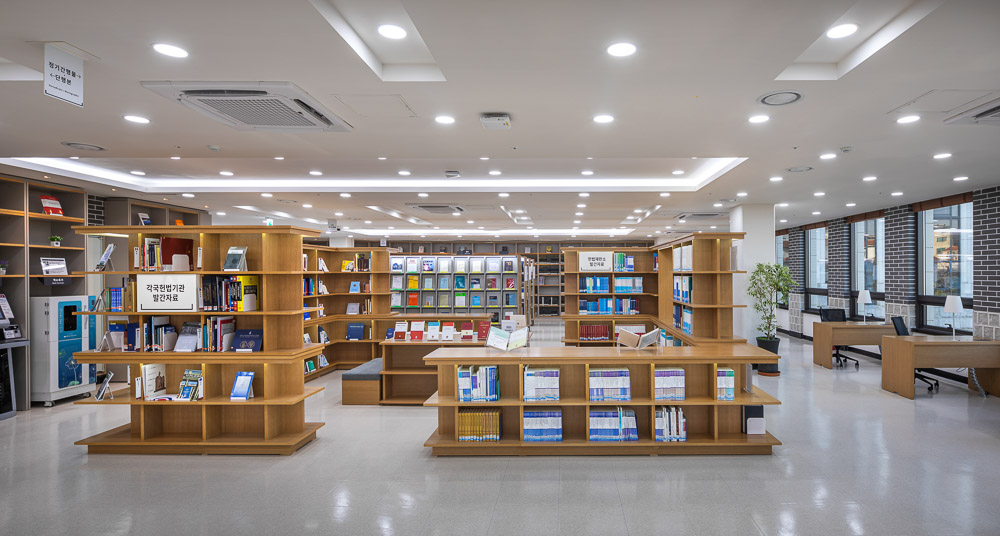

Archtiects (주)유선엔지니어링 건축사사무소 | USUN. Co. Ltd
Location Bukchon-ro, Jongno-gu, Seoul, Republic of Korea
Program Library, Office
Site area 16,808.60㎡
Building area 1,362.21㎡
Gross floor area 7,593.92㎡
Building scope B3, 2F
Building to land ratio 8.10%
Floor area ratio 15.08%
Design period 2015. 10 - 2017. 9
Construction period 2017. 12 - 2020. 4
Completion 2020. 5
Principal architect Bokji Kim
Project architect Dongwook Kim
Design team Jinna Lee, Jonghyeon Park, Dongjoo Lee, Yooseon Park
Structural engineer EAN PARTNERS
Mechanical engineer nabi BE &E Design Consultant Co. Ltd
Electrical engineer Shinwon Engineering & Consultant Co. Ltd
Construction Seongdo Construction. Co. Ltd
Client Constitutional Court of Korea
Photographer Joonhwan Yoon
해당 프로젝트는 건축문화 2022년 6월호(Vol. 493)에 게재되었습니다.
The project was published in the June, 2022 recent projects of the magazine(Vol. 493).
June 2022 : vol. 493
Contents : RECORDS A NEW SPACE PROPOSAL THAT REFLECTS PERSONAL PREFERENCES OUTSIDE THE CITY CENTER 도심 밖, 개인의 취향을 반영한 새로운 공간 제안 CALL FOR ENTRIES: ‘SEOUL AR..
anc.masilwide.com
'Architecture Project > Office' 카테고리의 다른 글
| WOLBAE MG COMMUNITY CREDIT COOPERATIVES (0) | 2022.10.20 |
|---|---|
| PARTENORD HABITAT HEADQUARTERS (0) | 2022.09.26 |
| PROGETTO ITALIA (0) | 2022.09.14 |
| WAVE ONE (0) | 2022.09.13 |
| AGENCY GIBOIRE MORBIHAN OFFICES (0) | 2022.09.07 |
마실와이드 | 등록번호 : 서울, 아03630 | 등록일자 : 2015년 03월 11일 | 마실와이드 | 발행ㆍ편집인 : 김명규 | 청소년보호책임자 : 최지희 | 발행소 : 서울시 마포구 월드컵로8길 45-8 1층 | 발행일자 : 매일







